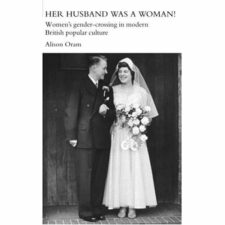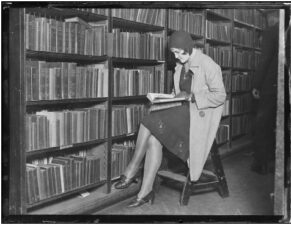It’s the people around me, people I know, who impress me and are my role models. My grandmother, mother and sisters I have admired and looked up to. An incredibly strong woman, my adoptive grandmother had eight children to look after: she married a Japanese man who was deported to Japan when they were rounding up the Japanese in Australia and sending them back, so she had to raise her children on her own. One of my earliest memories of her was when I was quite young, at a time when so-called ‘half-caste’ children were taken away from Aboriginal families. Some gudia came to the house. They were wanting to take me. My grandmother wouldn’t let them and chased them out of the yard. That is a powerful memory of a strong Black woman.
My grandmother’s Japanese husband never returned. He could have died, he may have remarried, we don’t know. But I would like to find out. They were married legally in the Beagle Bay Catholic church, which made his deportation all the more shocking, considering the moral precepts, then, around the institution of marriage.
When older, I recognised how, being married but having no husband around her, she was a strong independent woman making it on her own at a time when there was no welfare or supporting mother’s pension. She brought up her children without that sort of assistance, and she made it.
I was born and grew up in Derby in the north-west of Western Australia, in the Kimberley region. My people are Bardi. Traditional Aboriginal names in Western Australia more complicated than in Victoria, New South Wales and Queensland, where Koori and Murri encompass a large area. In the north west of Western Australia we have a number of identifiable nationalities. Nungas are from South Australia. Nyoongah or Nyoongar is the name for the group from the south west of Western Australia.
My other brothers and sisters were taken away to Lombadina mission. Ironically, this wasn’t taking us away from our traditional lands as the mission was in our ‘country’. Some were taken away to other areas of the state and completely separated from their families and country.
I escaped being taken to the mission because my real mother, Wannamad (her English name was Margaret), whom I did not know, was very ill. The gudia rounded up all the ‘half-caste’ children and managed to get hold of my older brother and younger brother and sister but my elder sister remained with my mother … When the white people came looking for the ‘half-caste’ kids she painted my sister black with charcoal. I was with my Aunty Rita who was already struggling because she had my older brother Johnny to look after. She went to old girl Canice, asking her if she would look after me. As a result I escaped the mission experience.
In Derby the white people were considered as ‘gudia’ or ‘other’. There were ‘gudias’ and Black people, and the two didn’t mix, apart from school. At primary school we got to know some guida kids, but they were in a minority. I thought it was ‘Shate’ school just by the way it was pronounced and it was only in later years I found it was ‘state’ … I remember reading a novel with a girl-character named Penny-lope. Later at boarding school I met a girl called Penny. I asked her what it was short for and she said ‘Penelope’. I had a little giggle to myself. I was self-educated and read a lot. When you don’t hear words prounced in their proper context you become linguistically disadvantaged.
I went through the Catholic education system, and the state school kids and Catholic school kids had nothing to do with one another. They seemed like different children altogether. In the Catholic school there were a lot of Aboriginal children. This was due to the missionary influence …
In 1977, when I was 17, I became an exchange student to the United States, completing my final year in Wisconsin. 1975 was International Women’s Year and Carol McCormack came to our school to talk about the American Field Service (AFS) programmes and her experience as an AFS student. Afterwards I talked to her sister-in-law, Sister Irene McCormack, about it and said: ‘Wow, what an experience, that must be something to go away, gee I would like to do that.’ Sister Irene said: ‘Well, you could.’ I said: ‘What do you mean?’ ‘You could go away if you wanted to.’ When the next year came around, Sister Irene had application forms for me … I’ve always been lazy with filling in forms. She kept nagging me … I had to write about myself and found it difficult, as I do now. Sister Irene got me in a room, sat me down, and said: ‘Right, you are not moving until you fill in these forms.’ I had to make several copies and it was through her pushing me that I applied … I was one of the first kids from Western Australia to find out where they were going – I was placed immediately …
I went from a small boading school to a public school of 2000 children, and it was 3rd, 4th and 5th Year, sophomore, junior and senior in the US. That was different getting accustomed to going to school for only 3rd Year students onwards. My American family the Halfmanns were wonderful, a big Catholic family with eight children. I felt I was living in the land of the giants – they were all very tall, with an average height of 5’9″ …
I felt an incredible sense of freedom in the US, one I had never experienced in Australia because of the oppression and racism … Saying that to white people since I have returned, they find it hard to take. White Australians don’t handle the race issue easily and don’t like being told they are ‘racist’. They react by saying: ‘Oh, but America has had its problems too …’ But when I was in the States, many Americans hadn’t met Australians so had no preconceived notion of what an Australian was. When they saw me they would say: ”This is Marie, the exchange student from Australia.’ And there was a wonderful acceptance. ‘Hello, I’ve never met at Australian before.’ As a Black person in [Australia] meeting someone, immediately they see you’re Aboriginal and slot you into a category, with the stereoptypes going along with it. When I met American people there was none of that …
When I took American Black history and told the kids I was ‘Black’, they took greater interest in me in class, saying: ‘What do you mean?’ I said: ‘Well, back in Australia we are a Black people and I identify as a Black person.’ This meant they could talk to someone Black and it made more sense of what they were studying.
Learning Black history was good for my developing political acceptance and consciousness. We learned about African history, early United States Black history and then right through to the 1960s and the political revolution, Malcolm X and Stokley Carmichael …
I was in Washington DC during the Equal Rights Amendment (ERA) march where Jane Fonda spoke. I remember walking around and there were thousands of women. I thought: ‘What are they doing here?’ I stopped one woman and said: ‘What are you protesting about?’ ‘ERA. Here!’ She handed me a pamphlet and explained about the Equal Rights Amedment. I’d been aware of feminism from a young age, 1975 onwards, and it made a lot of sense to me then as it does today. She said: ‘Come and join us!’ and I did …
Marie Andrews (c) 1992
Marie Andrews graduated in law from the University of Melbourne after obtaining a degree in anthropology from the Unitersity of Western Australia. Before going to the Victorian Bar (to practice fulltime as a Barrister), she worked in the public service and at radio 5NR, community radio, as producer and presenter. She has worked in the Department of Aboriginal Affairs in the federal government of Australia.
This is an excerpt from ‘For My People’, published in As a Woman – Writing Peoples Lives, Jocelynne A. Scutt (ed.), Artemis Publishing, Melbourne, Australia, 1992.

